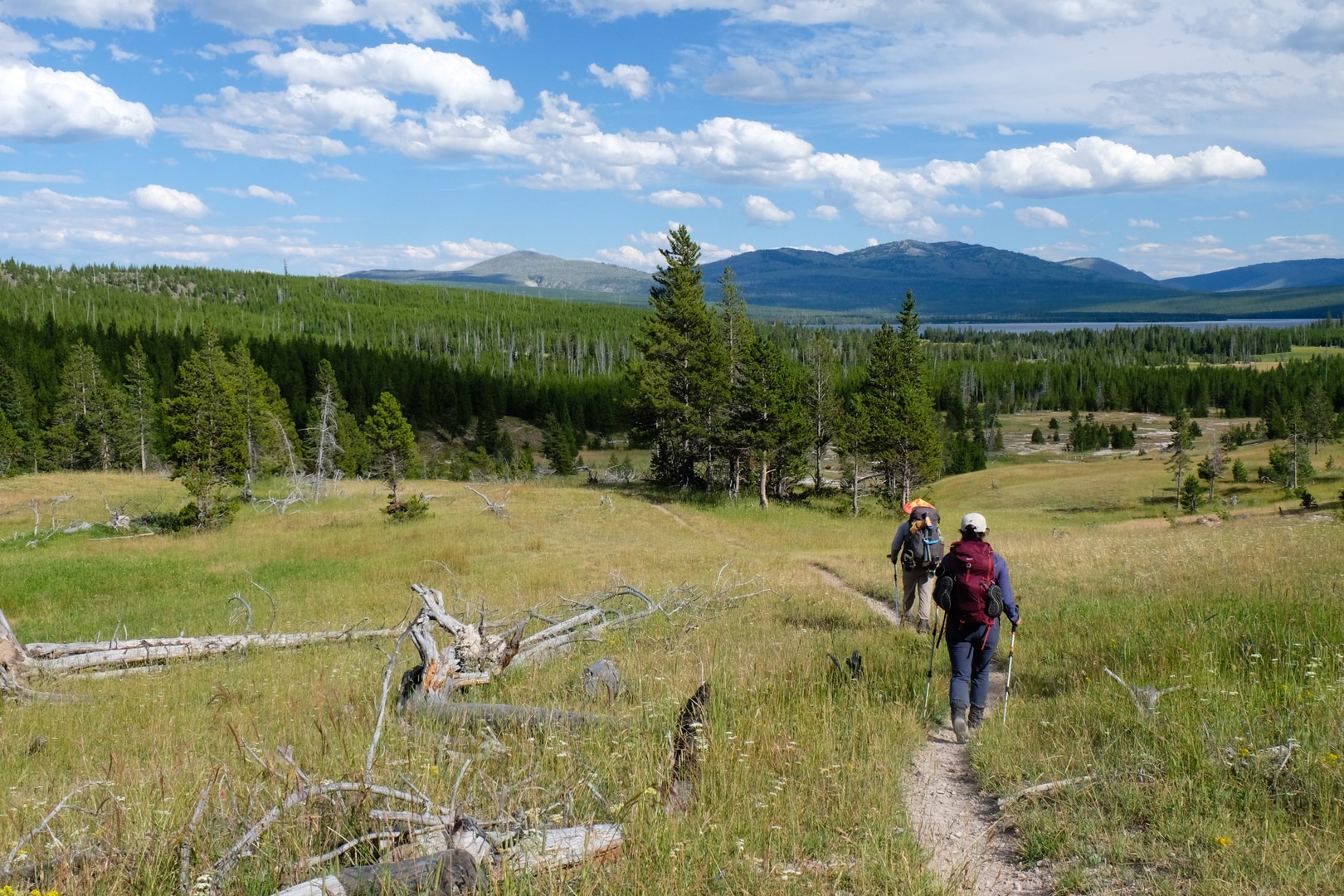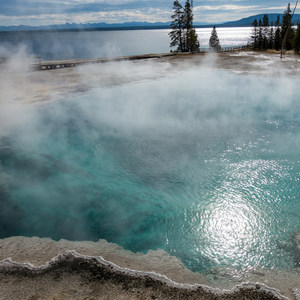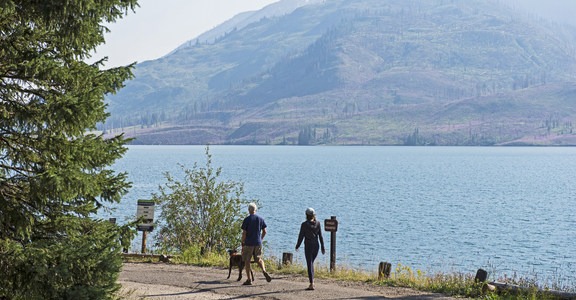You are here
On Yellowstone National Park’s Heart Lake Trail, you can hike through an active thermal area, camp along the shores of a remote backcountry lake, and trek your way up to a fire lookout for incredible far-reaching views. The trip to Heart Lake and Mount Sheridan makes for an excellent 2-night backpack trip, but it could be done as a long, strenuous dayhike.
Find ample parking at the Heart Lake trailhead, with a pit toilet and room for stock trailers. The trail moves east through a stand of lodgepoles, growing back from the devasting 1988 Yellowstone fires. The grade is fairly flat and gentle for several miles, passing through forest and small sections of grassy meadows. There are a few minor creek crossings, all made easy with simple log bridges over them.
When the trail begins to descend, a view of an active thermal area at the base of Factory Hill opens up. Witch Creek runs through the thermal area, making the creek itself much warmer than many of Yellowstone’s small creeks and streams. The tall steaming vents here reminded members of the 1885 Hague Party of a “New England factory village.” The trail runs directly by bubbling blue thermal pools that steam even in full summer heat. The crust around these pools can seem deceivingly stable; please observe these thermal features from a distance to ensure your safety and to prevent the growth of social trails in the area.
As the thermal features start to fade away behind you, you’ll come to a lush green meadow and the Heart Lake Patrol Cabin at the meadow’s edge. Just past the cabin, the trail comes to its first junction at the shore of Heart Lake. Soak in your first look of the sprawling lake and, if you hadn’t guessed it already, Mount Sheridan looming tall and mighty to the west of Heart Lake. Take a right at the junction and follow the lake. You’ll notice another thermal area off to your right, which notably contains the active Rustic Geyser.
Once you’ve trekked past two backcountry sites, you’ll arrive at the Mount Sheridan junction and the beginning of your long and difficult ascent. The trail grade is steep and relentless, and as the switchbacks cross an unforested mountainside it is highly recommended to begin the ascent up Mount Sheridan as early as possible. Snow fields can linger at the high elevation even into August but should not be counted on for a source of water on the trail.
Small pockets of shade offer relief from the intense summer sun. As you climb higher, Heart Lake begins to resemble a heart; however, it was not the shape that gave the lake its name, but actually an early hunter named Hart Hunney. When you’ve finally crested the ridge, you’re instantly faced with a view of the Tetons and the Red Mountains to the southwest. Walk the ridgeline to the Mount Sheridan Lookout, built in 1931 by the National Park Service. The views from the lookout are nothing short of excellent. Not only are you able to see the Tetons, you can view much of the southern Absarokas, Yellowstone Lake, and even pick out Mount Washburn, Observation Peak, and Mount Holmes to the north.
Backcountry Camping at Heart Lake
There are six hiker-only campsites at the base of Mount Sheridan, with campsites 8H6 and 8H5 before the Mount Sheridan junction and 8H4 to 8H1 after the junction. Each site has your standard Yellowstone backcountry set-up with a food preparation (no fires) and sleeping area, but each site also sports quick access to Heart Lake shoreline. If you’re lucky to snag one of these sites, plan a post-Sheridan soak and lounge your way through the evening until the loons call out into the night.











Comments
Sign In and share them.